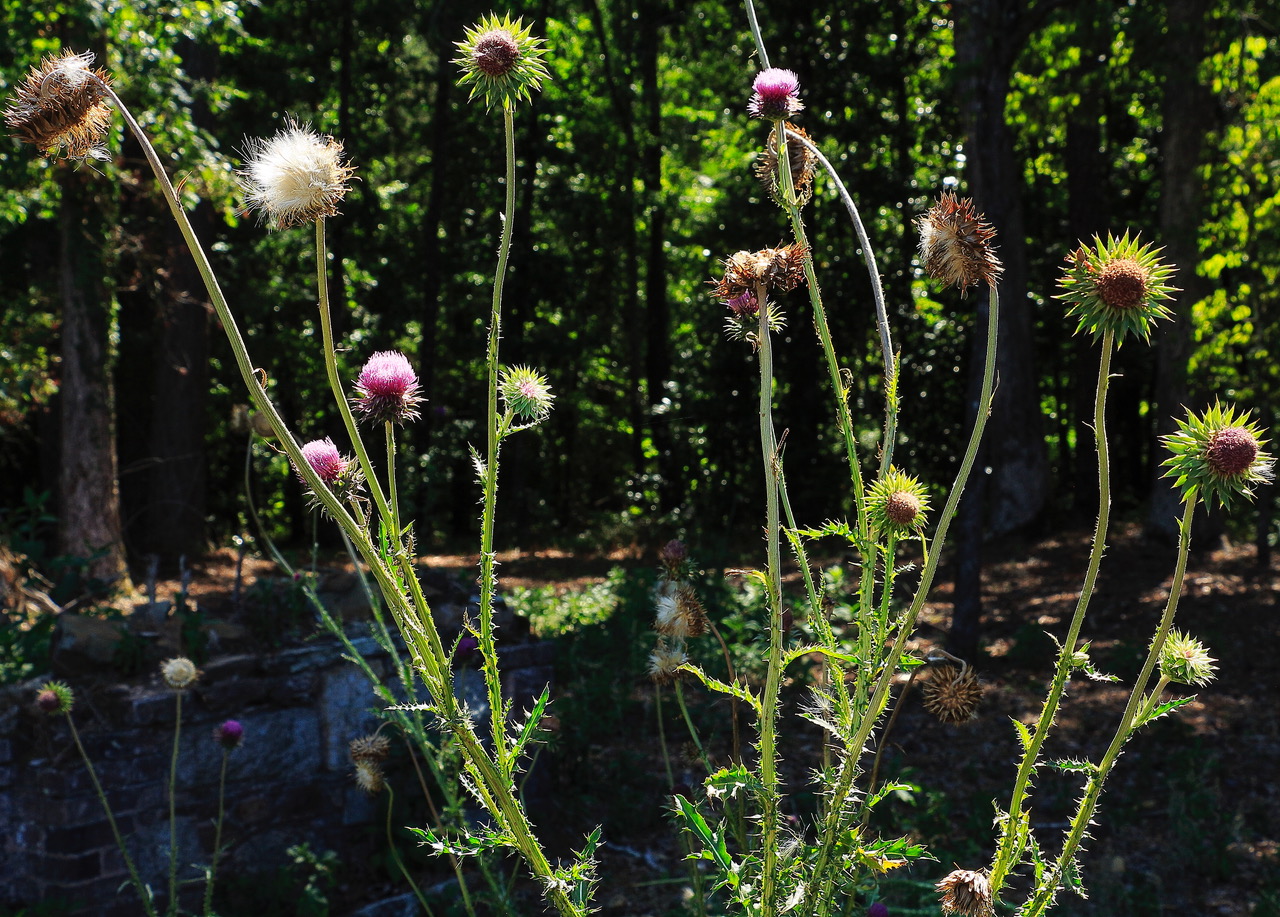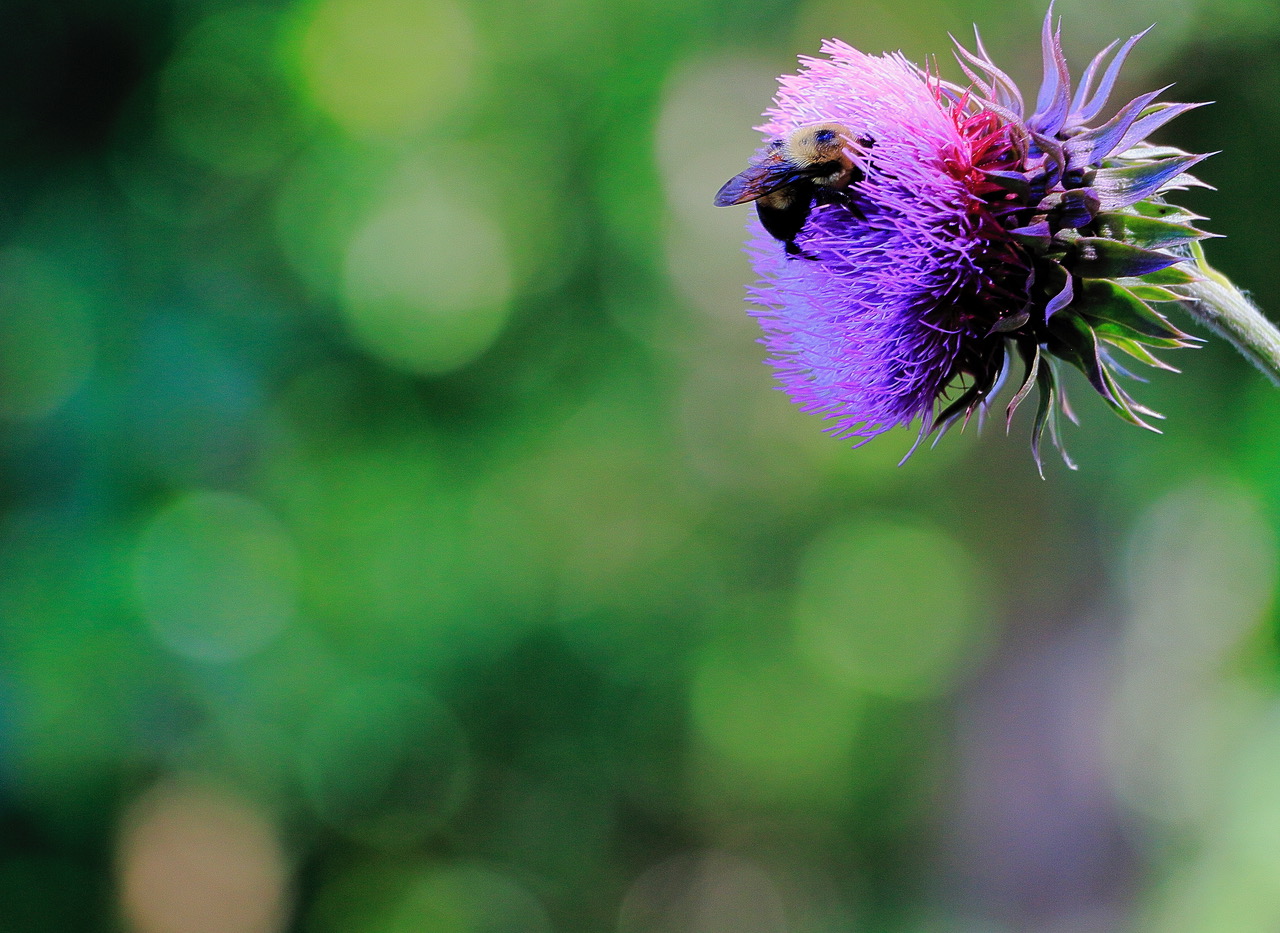Thistles, A Prickly Subject
August 4, 2022By Tom Poland
We’d be walking to a farm pond in quest of bream when Grandmom Poland would spot a thistle. “Watch out for that nettle.” She’d hardly break stride leaning over to yank it from the earth. Thus, I saw not one of these “weeds” reach maturity.
Thistles. Their spines would nettle you. Thistles had to be undesirable when it came to farmland and pastures, but did they have redeeming qualities, even one?
The years rolled on and I, too, pulled up thistles. Here in Georgialina, a persistent thistle pops up each spring near my heat pump. When it sports a velvety burgundy crown, I do as Grandmom did. I yank it from the ground.

Thistles resemble sunflowers and are in the same family. Photo by Ton Poland
On a warm Sunday afternoon in June, my views on thistles began to change. While visiting an old cemetery, I came across flowering thistles tended by bumbles aplenty. The thistles, with their spiky flower heads and colors and downy seeds, looked downright alien. But, there was no mistaking their beauty. They’re beyond beautiful and I learned they do much for other members of nature. Their seeds provide wildlife food, and hummingbirds, bees, flies, and butterflies love their super-sweet nectar.
Goldfinches and thistles, in particular, share a bond. Goldfinches can’t begin nesting until thistles bloom and produce downy seeds. Goldfinches and other birds line their nesst with soft thistledown. It gives fedglings a bed as soft as, well, as feathers. And goldfinches will tell you the seeds are packed with nutrients.

Bumblebees and a host of insects love thistle nectar. Photo by Ton Poland
All thistle species prove edible and contain higher levels of major nutrients than some commonly cultivated vegetables. Like the birds and bees, you can get in on the act too. Want some sweet chili thistles? (Be on guard as spines go.) Cut the edges off leaves with scissors and save the ribs. Remove spines from the stem with a vegetable peeler. Blanch ribs and stems. Heat chili powder in olive oil. Add tomato paste and about 1 cup stock or water. Add thistles and simmer until the ribs are soft and stock reduced. Turn off the heat and add two tablespoons of honey. Serve over rice. Enjoy and sing like a goldfinch.
Thistle chili aside, the sad reality is no one seems to love thistles. My grandmother sure didn’t and each time she killed a thistle, it confused me. Mom had taught me to revere beautiful flowers. To clear away confusion and better understand thistles I reached out to my cattleman friend, Billy Moss, a hometown boy. Billy shed light on why my grandmom plucked thistles from the earth.
“Thistles are a cattle producers worst enemy. They produce hundreds of seeds that blow everywhere. They will literally take over a pasture. They are very hard to kill when they bolt, and produce a big stem when the flower head appears. They are easy to kill with chemicals early in the spring, late February or early March, when they are in the rosette stage and just emerging. Yes, they do produce a beautiful flower and seed that birds love but in my opinion their value ends there.”
There. You have the upside and downside on thistles. If you’re a cattleman, thistles are persona non grata. If you are a goldfinch, bumblebee, or one of myriad birds and insects, thistles are your grocery store. If you’re a fan of flowers, you appreciate their otherworldly beauty like some creature from intergalactic space.
As soon as I wrap up this column, I’m going out to see how my thistle’s doing. This summer I’ll let it grow and hope it brings in more goldfinches and hummingbirds, but as thistle chili goes I’ll defer.
Visit Tom’s website at www.tompoland.net
Email Tom at [email protected]




















